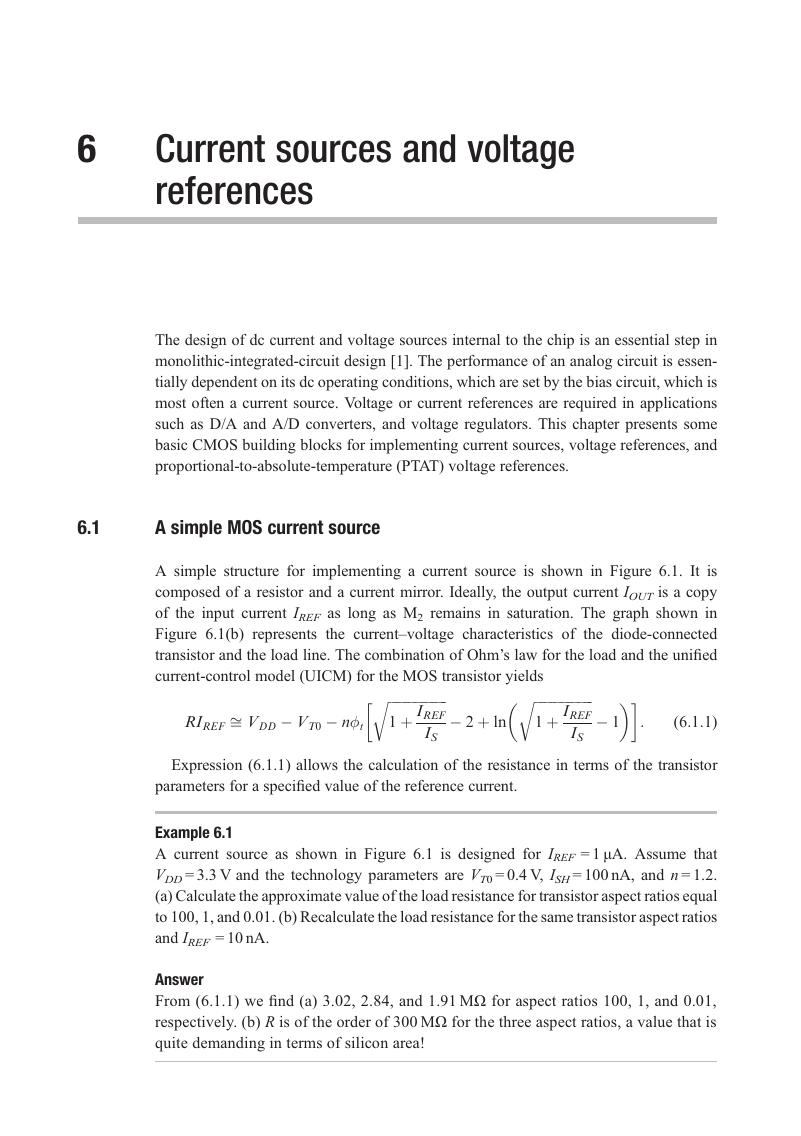Book contents
- Frontmatter
- Contents
- Preface
- 1 Introduction to analog CMOS design
- 2 Advanced MOS transistor modeling
- 3 CMOS technology, components, and layout techniques
- 4 Temporal and spatial fluctuations in MOSFETs
- 5 Current mirrors
- 6 Current sources and voltage references
- 7 Basic gain stages
- 8 Operational amplifiers
- 9 Fundamentals of integrated continuous-time filters
- 10 Fundamentals of sampled-data circuits
- 11 Overview of MOSFET models and parameter extraction for design
- Index
- References
6 - Current sources and voltage references
Published online by Cambridge University Press: 17 December 2010
- Frontmatter
- Contents
- Preface
- 1 Introduction to analog CMOS design
- 2 Advanced MOS transistor modeling
- 3 CMOS technology, components, and layout techniques
- 4 Temporal and spatial fluctuations in MOSFETs
- 5 Current mirrors
- 6 Current sources and voltage references
- 7 Basic gain stages
- 8 Operational amplifiers
- 9 Fundamentals of integrated continuous-time filters
- 10 Fundamentals of sampled-data circuits
- 11 Overview of MOSFET models and parameter extraction for design
- Index
- References
Summary

Information
- Type
- Chapter
- Information
- CMOS Analog Design Using All-Region MOSFET Modeling , pp. 199 - 224Publisher: Cambridge University PressPrint publication year: 2010
